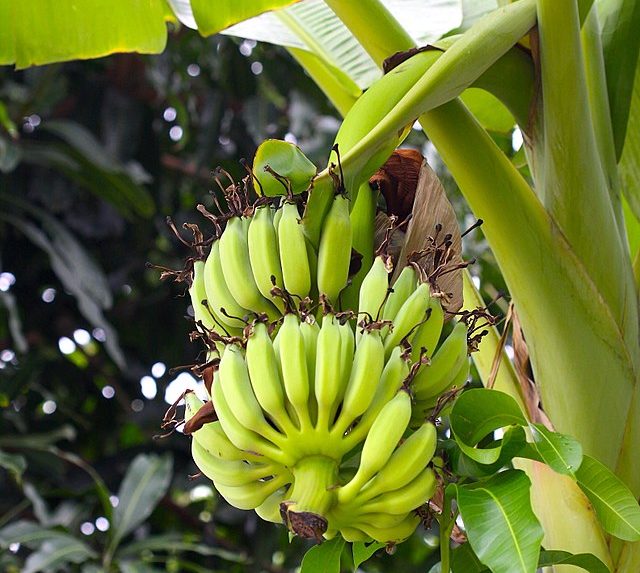They may be fewer than the traditional kluai na mwa variety, but “golden bananas” or kluai hom thong are turning farmers’ fortunes in Thailand.
A production slump in the 2023-2024 harvest has made demand override supply and occasioned market price doubling.
According to the Bangkok Post, this Musa acuminata AAA group member was costing 30 baht ($0.89) a kg by September 10, 2024. The normal price is usually 15 baht ($0.44) per kg.
Beneficiaries include growers in the Bang Kaew district of the southern province of Phatthalung, who are recording an income spike of 100%.
Less Rain, Price Boon
The price climb owes specifically to lack of rain in end 2023, which caused a poor harvest with an eventual ebb in market supplies.
Thailand’s ministry of agriculture now estimates 2024’s production at merely 32,000 tonnes, almost 1/4 of the 2023 harvest at 120,000 tonnes.
An opposite trend to production is manifest in the wholesale prices, which have risen by 20.9% in 4 years. Candidly, the rate historically increased from 243 baht ($7.20) per 100 fingers in 2021 to a 292-baht ($8.65) estimate in 2024.
Demand for “Golden Bananas”
Another contributing factor is growing local demand for “golden bananas,” which are usually larger than the ubiquitous kluai na mwa variety.
So is international demand by selective nations like Japan also fueling this premium rate. Indeed, Asia’s biggest economy orders 80% of Thailand’s outbound kluai hom thong shipments.
Japan imposes an 8,000-tonne import quota of Thai bananas but only around 50% reach there due to strict standard requirements.
Still, this international quota is enough for Phatthalung farmers who grow export-ready aromatic bananas alongside the equally-appealing “Sang Yot” rice.
A similar case applies to kluai hom thong’s growers in western-central Thailand’s Phetchaburi province. Locals of the province’s Ban Lat district have especially welcomed the current pricing strength, citing it competitive.
Therefore, weather whims and supply factors have conspired to improve specialty banana prices for farmers in southern and central Thailand. And as the following data reveals, ‘golden bananas” are but a part of a booming banana treasure of this agricultural nation.
Thailand Banana Statistics
Thailand produced more bananas in 2021 at 1,343,531 tonnes than in 2022 at 1,288,313 tonnes, according to FAOSTAT. Though high, the two figures represent just 0.04% of the output by the world production leader, India at 33,062,000 tonnes. In rankings, Thailand was 17th in production in 2022, with Asian neighbor Vietnam ahead at the 13th position with 2,500,000 tonnes.
What was the production trend in the 2012-22 decade?
In the period between 2012 and 2022, Thailand has seen moderate increase in annual output. In 2013, production rose by 1% to 1,030,000 tonnes, then spurted by 36% in 2014 to a decade high of 1,400,000 tonnes. Though 2015 saw a substantial decrease, all followup years up to 2020 showed gradual increase that culminated at 1,360,000 tonnes. By 2022, production had dipped to 1,430,000 tonnes but was still higher by 38.8% over the 2013 level.
How huge is the banana area in Thailand?
According to FAOSTAT, there were 58,389 hectares under bananas in 2022, a drop from 60,604 hectares in 2021. On comparative terms, global production leaders India and China had impressive acreage at 863,000 and 341,300 hectares, respectively.
How many Thai banana varieties are there?
Though only 20 banana varieties are under active cultivation in Thailand, the country boasts more than 50 varieties. Most are Musa genus types, including the Musa balbisiana species. Most local names begin with the term “kluai,” which is Thai for banana.
Is “golden banana” popular in Thailand?
The kluai hom (Musa AAA group) is a fragrant type with a skin that turns from green to golden when ripe. It is a highly popular daily treat, with many Thais munching it as a snack in form of fritters and cakes. It grows mainly in the provinces of Phetchaburi and Phatthalung in western-central and southern Thailand, respectively.
